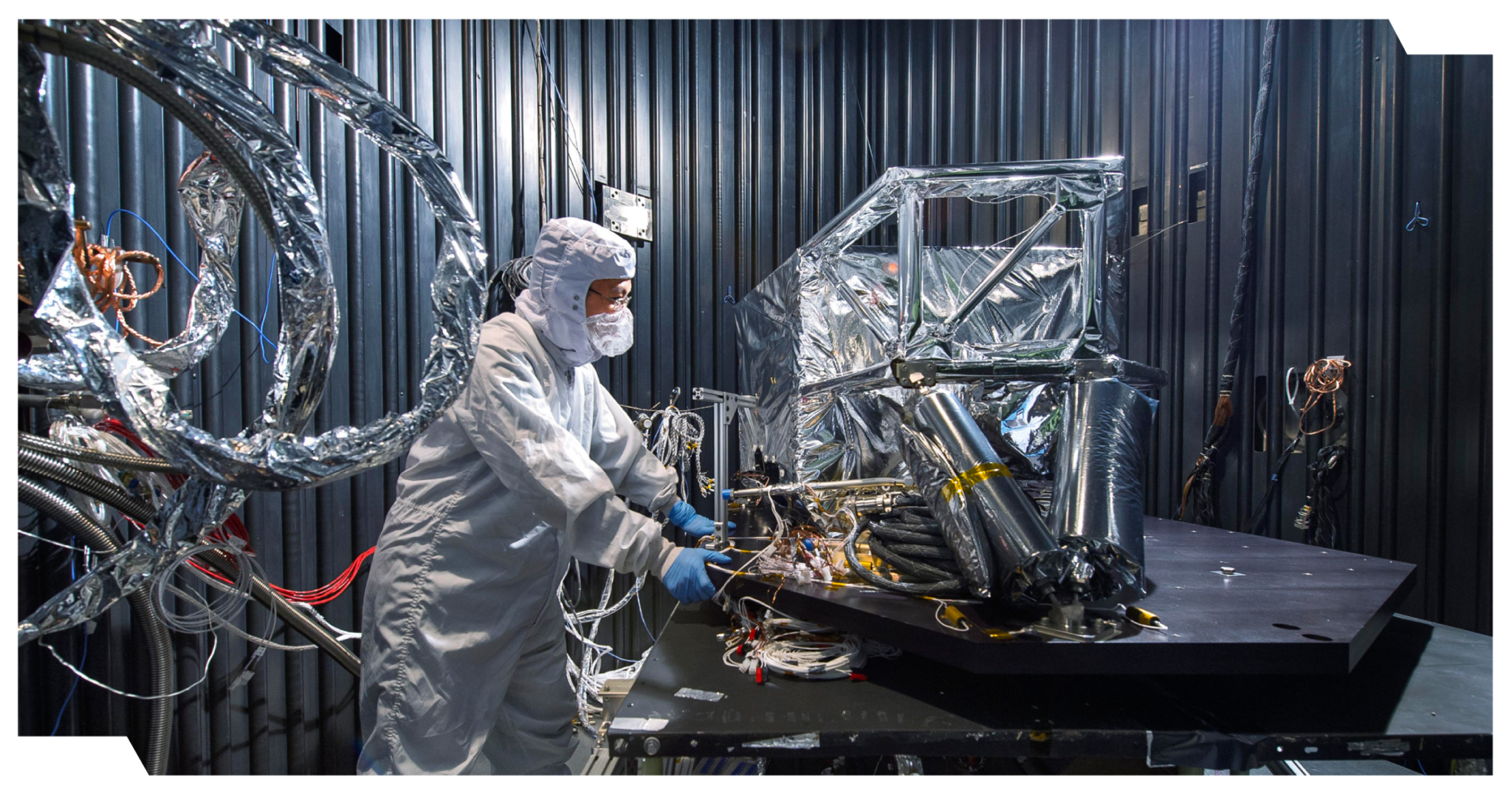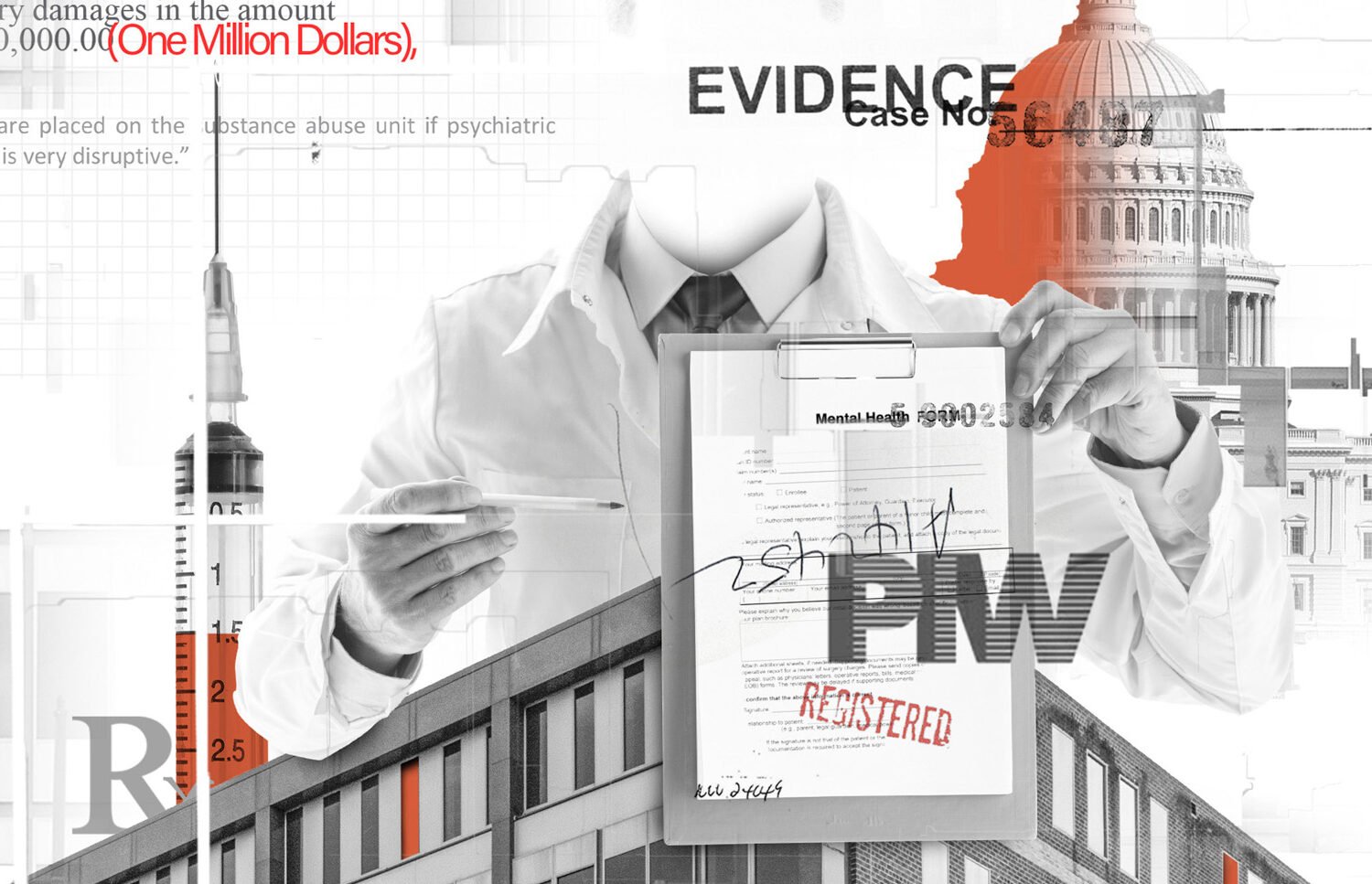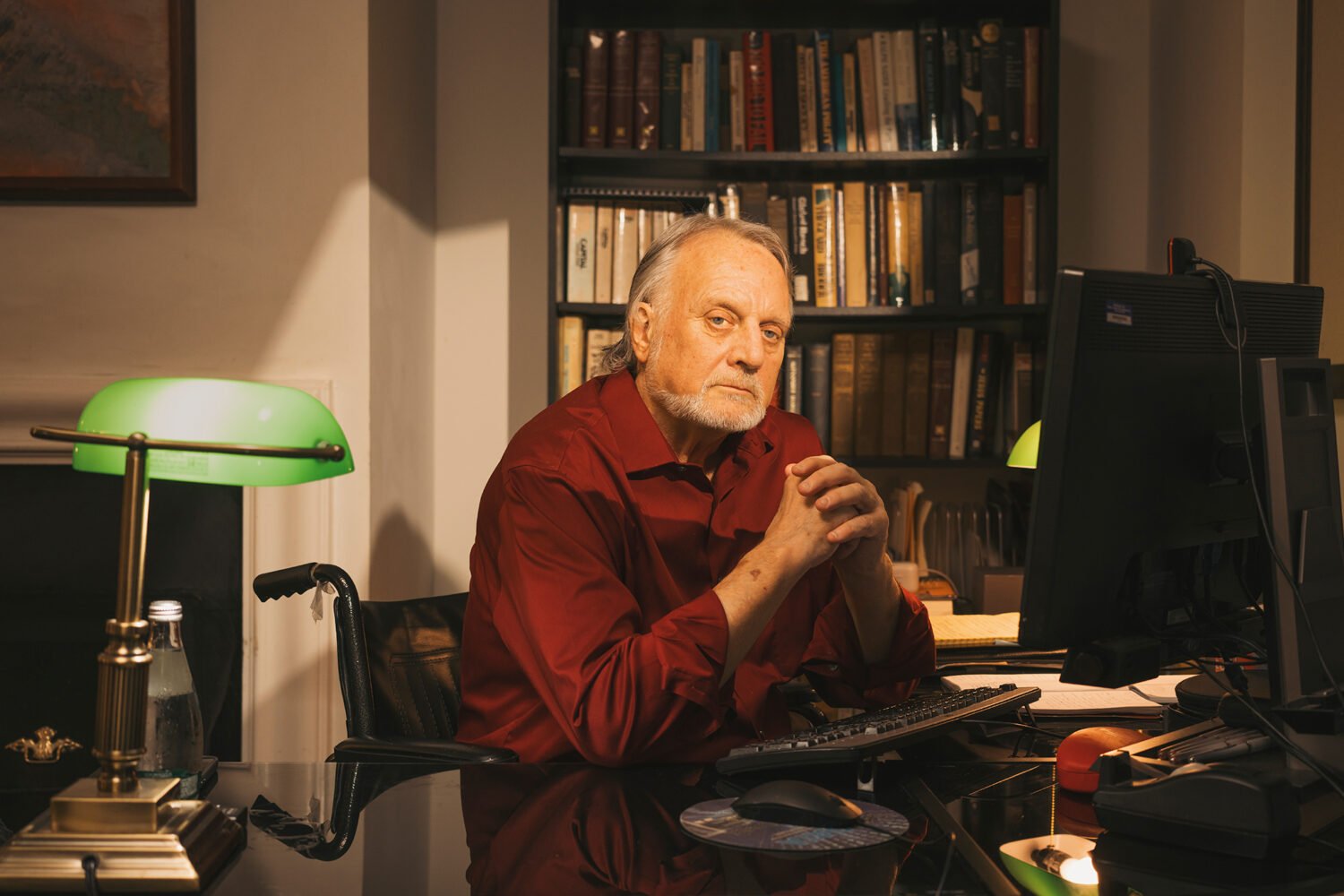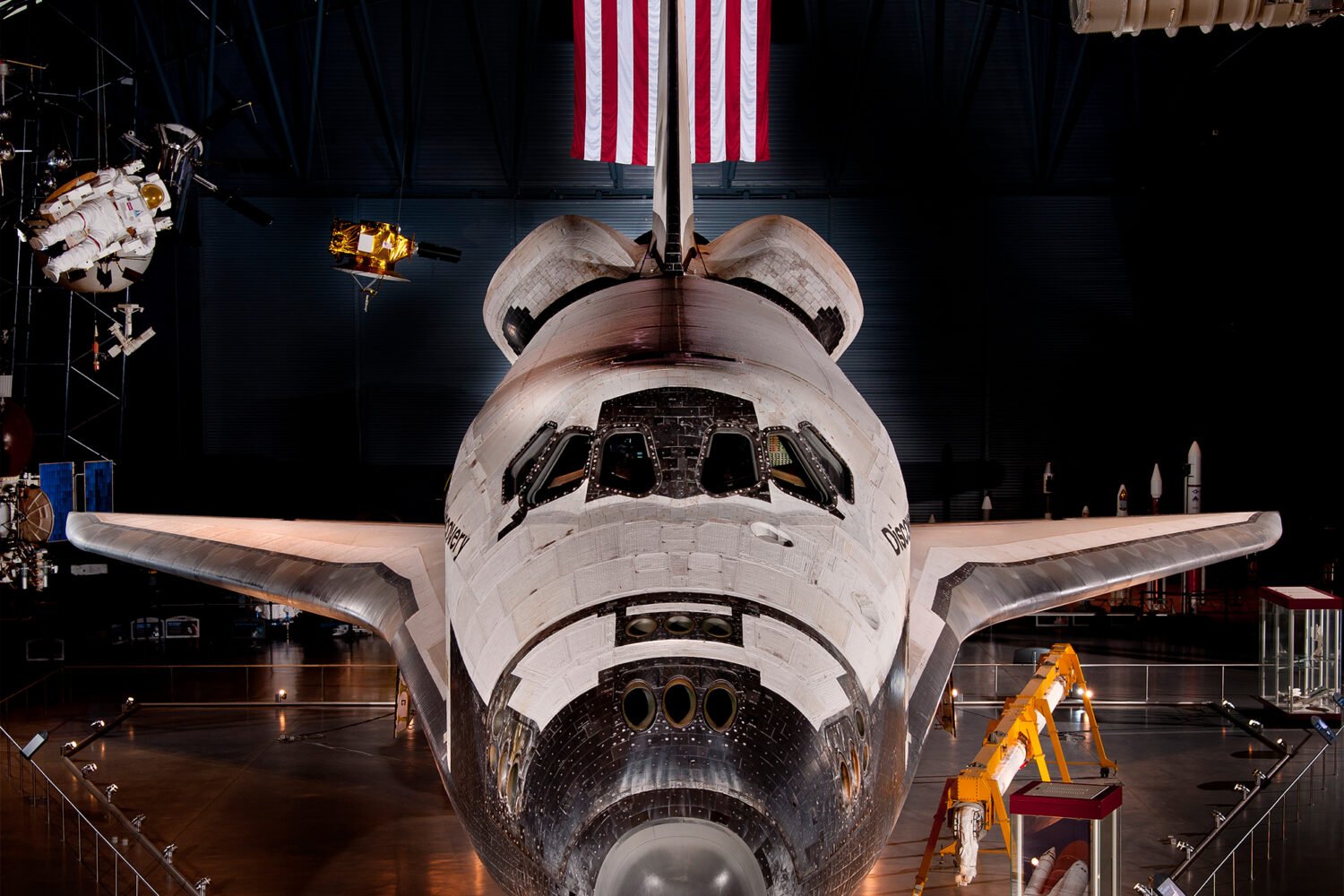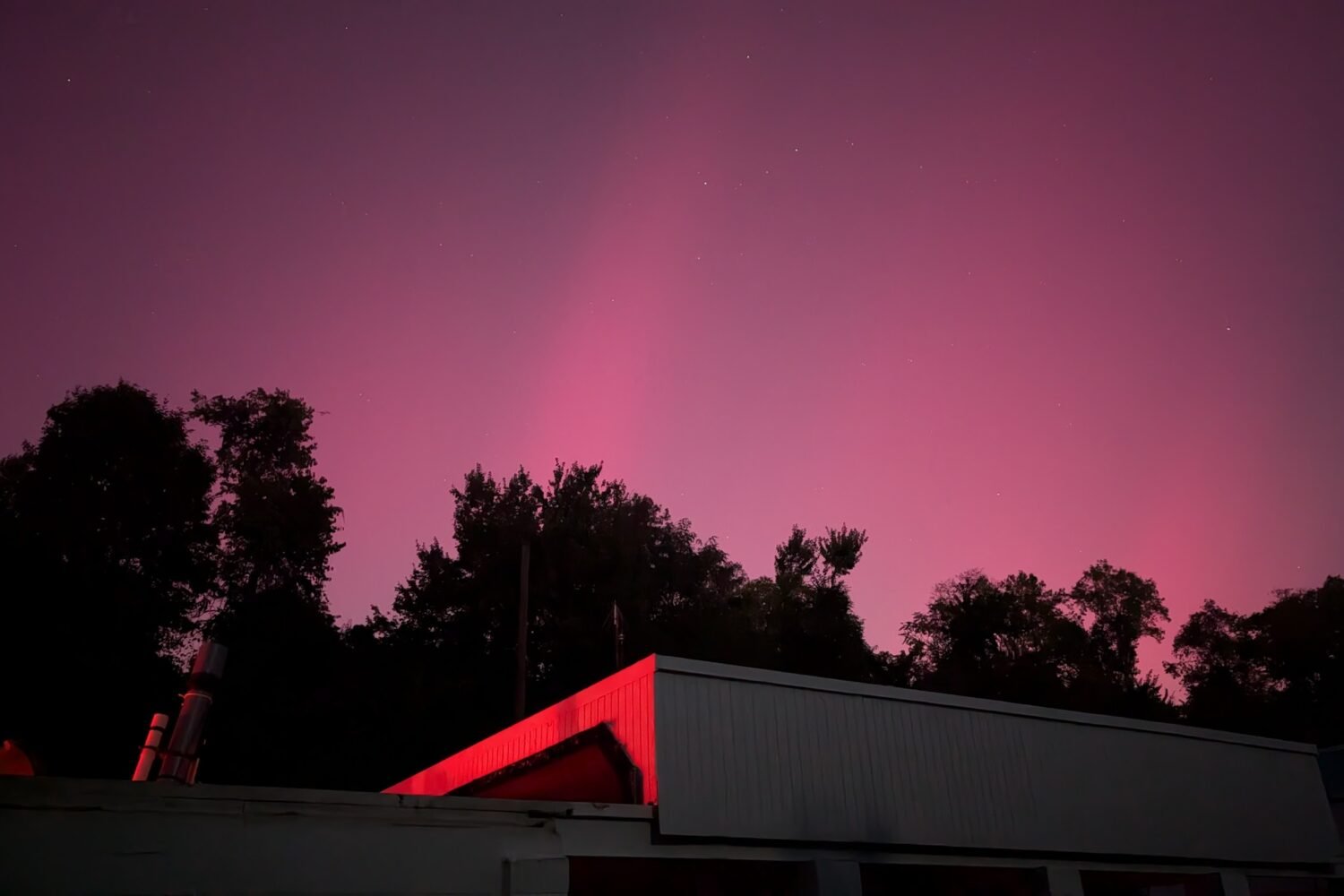This past December, NASA’s Parker Solar Probe flew closer to the sun than any spacecraft ever has, surviving expected temperatures of 1,800 degrees to collect data that’s helping scientists better understand how stars work. Before beginning its seven-year journey, however, the probe was put through the ringer closer to home—enduring just over two months of testing in airlessness and extreme cold (minus 292 degrees) at Goddard Space Flight Center in Greenbelt.
Established in 1959 as the nation’s first space-flight complex, Goddard oversees a $4 billion portfolio and is home to about 10,000 employees spread across its 1,270-acre main campus and sites in five other states. Its scientists, engineers, and technologists survey the moon for future crewed missions and study climate change back home. They peer into the cosmos with the Hubble Space Telescope and talk to astronauts on the International Space Station. They help ask scientific questions (do asteroids contain life’s chemical building blocks?), then work on missions to find answers (such as sending a robot to an asteroid to collect some rocks and bring them back to Earth). “We don’t do every single aspect on every single mission,” says Goddard director Makenzie Lystrup. “But we can. That’s what makes Goddard so important and unique.”
Currently, the center is readying the Nancy Grace Roman Space Telescope for launch by 2027. With a field of view that’s at least 100 times larger than Hubble’s, it could end up measuring light from a billion galaxies, providing an unprecedented view of the universe. Here’s an inside look at those preparations and some of Goddard’s other work—all pushing us farther into the stars.
Welcome to Goddard

Making History
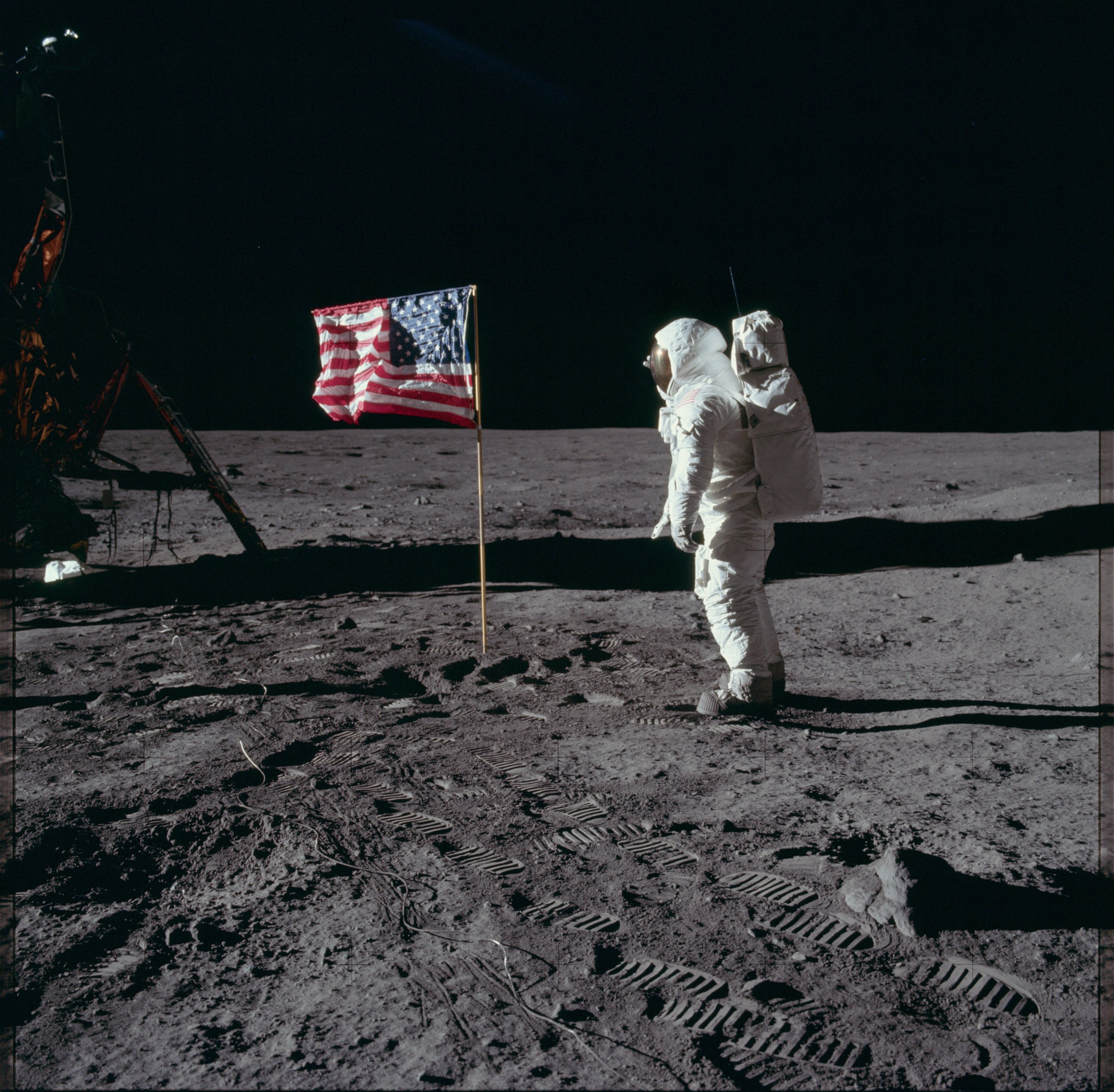
When Apollo 11 touched down on the moon in 1969, the first people to hear Neil Armstrong say “The Eagle has landed” were at Goddard, where engineers also created the tech that captured and broadcast the first moonwalk. Other groundbreaking moments at the center include early leadership of Project Mercury, the first US human space-flight program, and managing TIROS 1, the first weather-observation satellite. Goddard has since pioneered the repair of satellites in orbit and created instruments that have been sent to every planet in the solar system. Up next? Designing a space telescope to search for signs of life on planets orbiting other stars.
Famous Faces
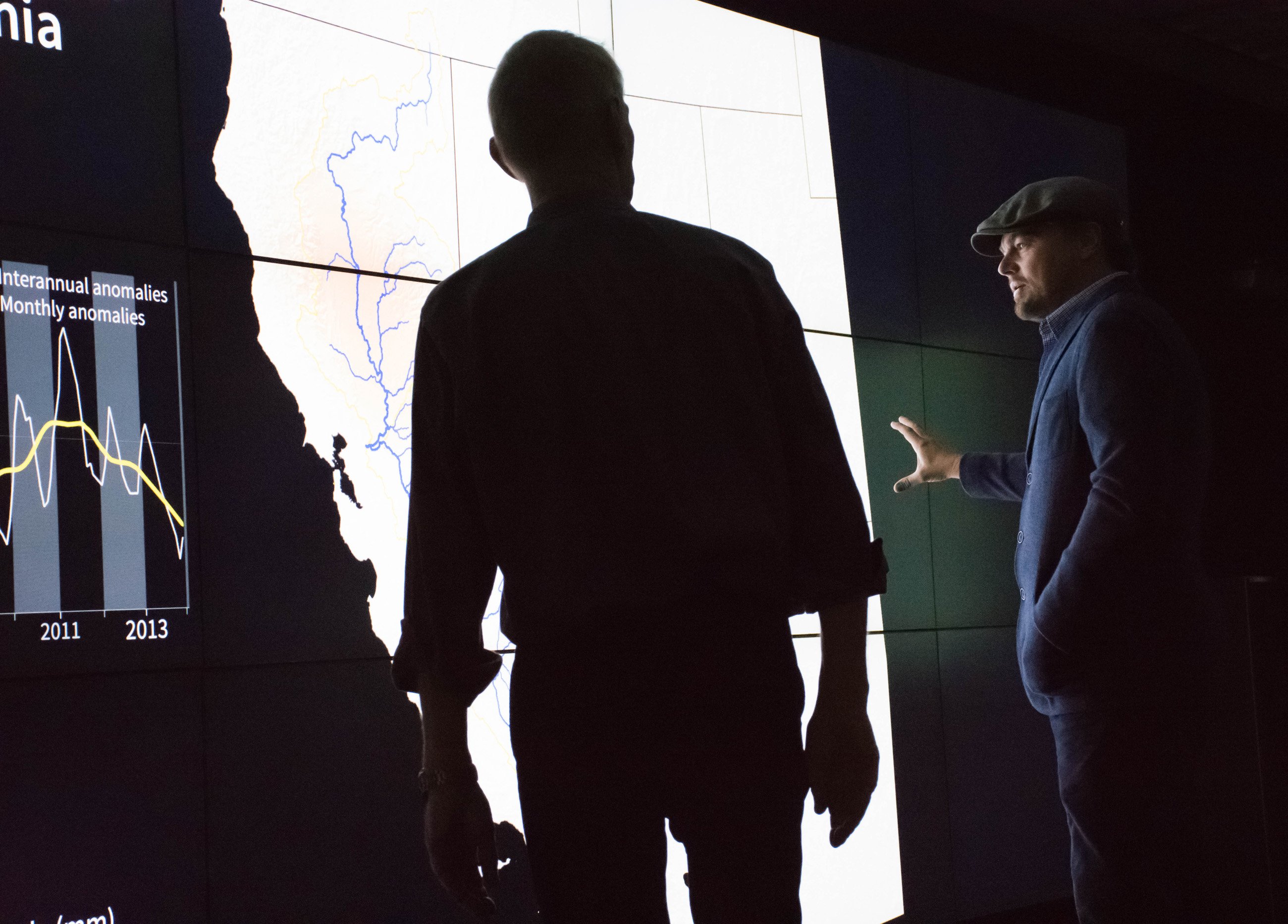
While producing a climate-change documentary in 2016, actor Leonardo DiCaprio (right) visited Goddard to discuss NASA’s work studying Earth’s atmosphere and oceans with Piers Sellers (left), a former astronaut and scientist. Queen Elizabeth II, Kamala Harris, and Star Trek actress Nichelle Nichols have also visited the Greenbelt campus.
Views From Above
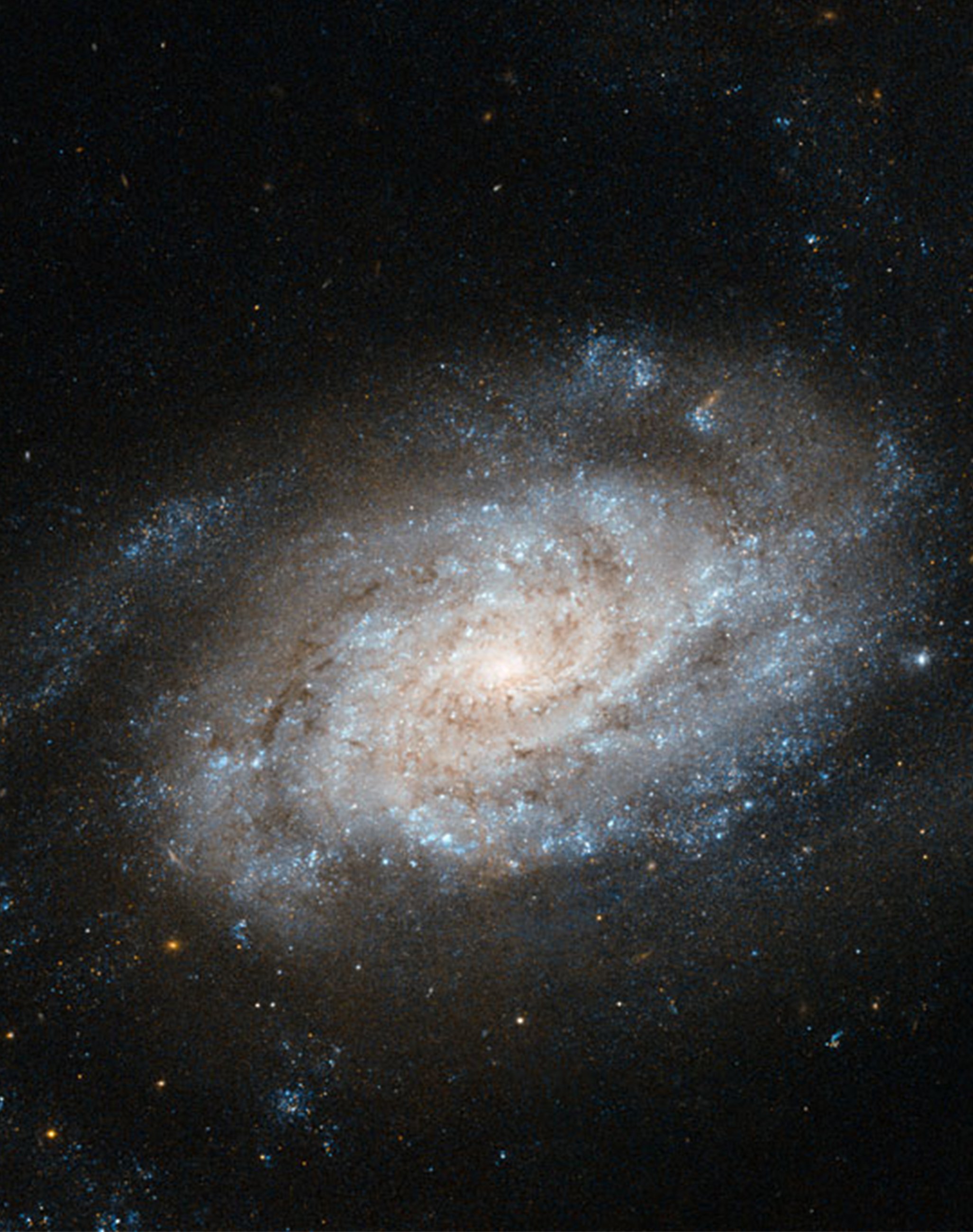
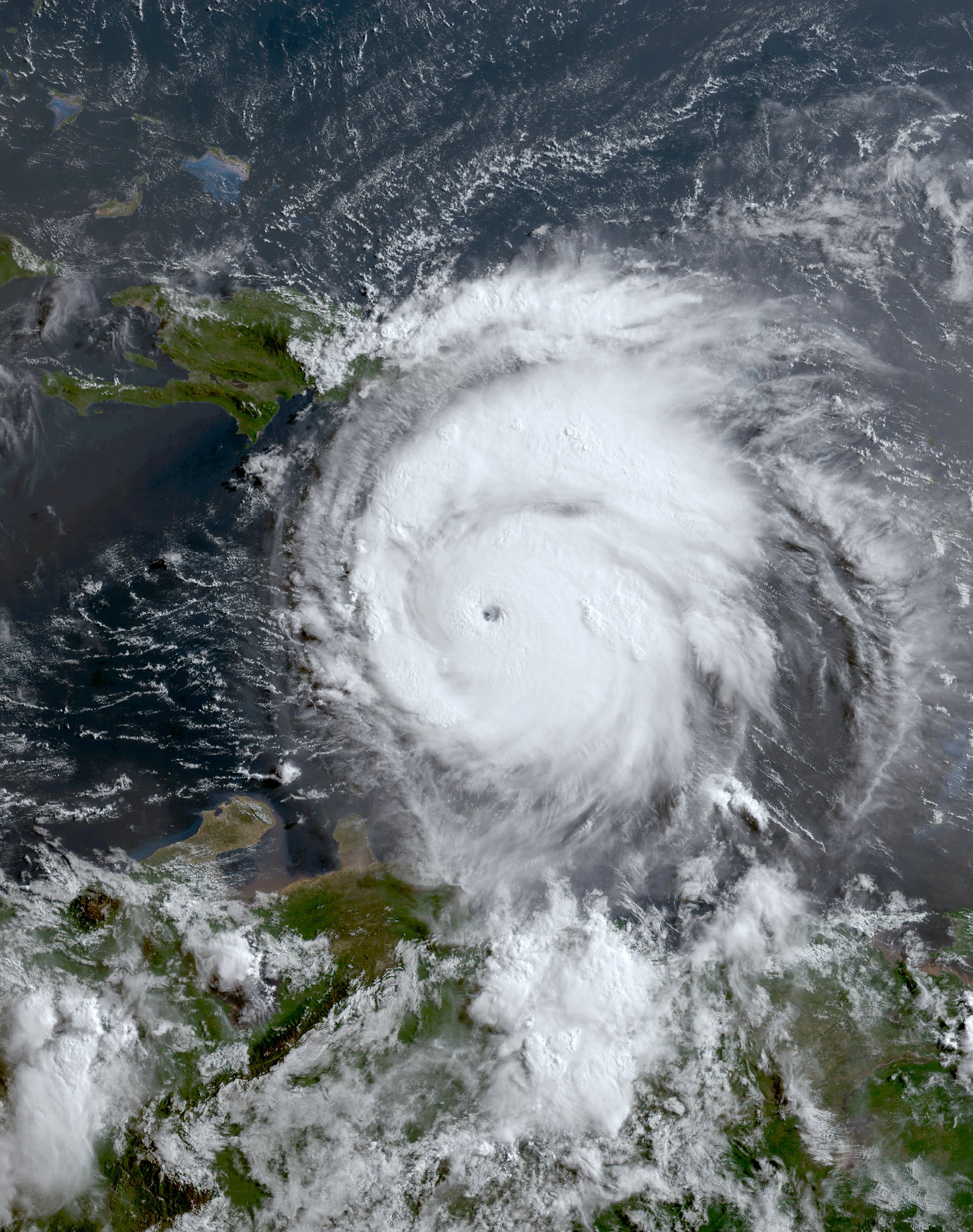
A fleet of orbiting satellites gives scientists—including those at Goddard, a global hub for climate research—a top-down view of weather patterns and events, including 2024’s Hurricane Beryl, a powerful storm that caused almost 50 deaths in the US and billions of dollars of damage across the Caribbean and North America. Looking out into the cosmos, the Hubble Space Telescope produced this image of spiral galaxy NGC 3455 (right), located 65 million light years away in the Leo constellation. In orbit since 1990, the telescope has spied a comet colliding with Jupiter, discovered moons around Pluto, and spotted the most distant star ever seen, Icarus, whose light took 9 billion years to reach Earth.
Back to Top
Building Roman
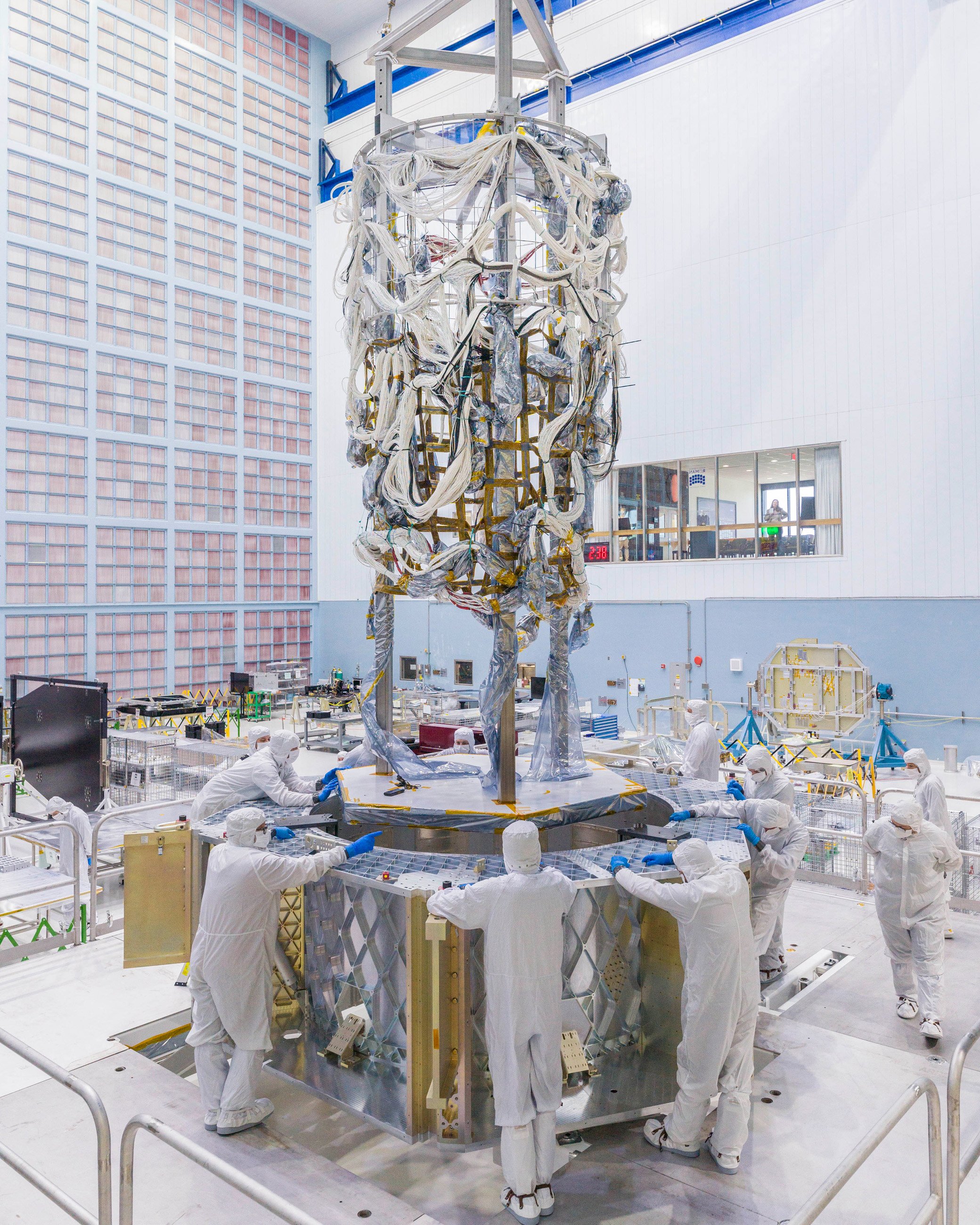
Inside the Clean Room
In development for more than a decade and expected to cost about $4 billion, the Roman Space Telescope will allow NASA to complete a census of planets outside our solar system and to better understand the ongoing expansion of the universe. Workers are assembling the telescope within Goddard’s eight-story-high clean room (above), which prevents contaminants from damaging spacecraft. Large enough to fit two space shuttles’ worth of cargo, the room circulates almost 1 million cubic feet of air a minute through 9,000 square feet of filters (in the wall on the left) that remove particles larger than five microns across—about 7 percent of the width of a human hair. Workers are forbidden to wear perfume, lotion, and deodorant; go through a 10-to-15-minute decontamination process; and don sterile “bunny suits” before entering an environment 1,000 times cleaner than a hospital operating room. “Roman’s optics have to be pristine, or else it’s analogous to fogging up your glasses,” says Jamie Dunn, the telescope’s project manager. “Even water is a contaminant—it can ice up in locations you don’t want.”
Assembly Required
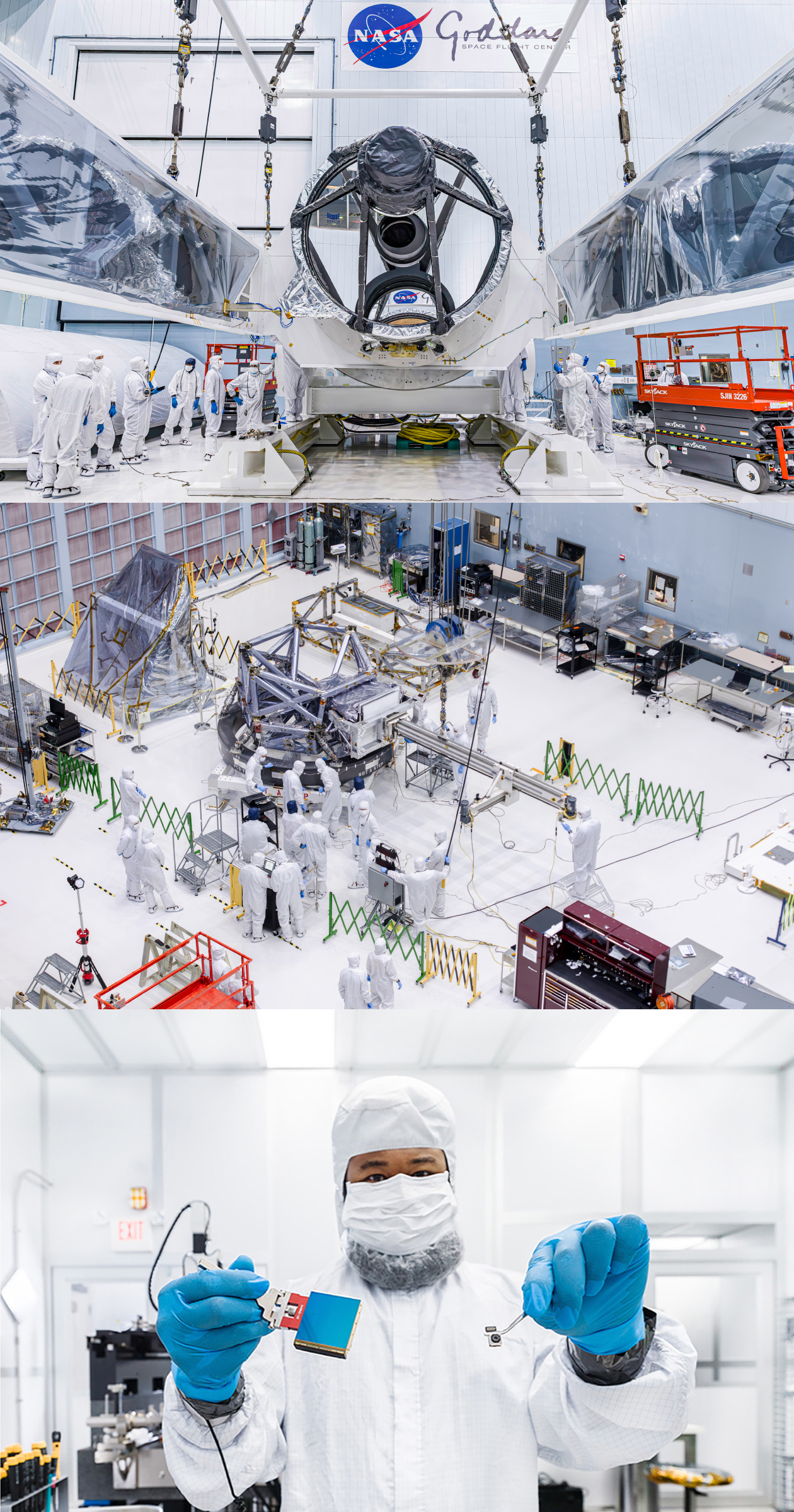
A multi-year process, Roman’s construction is a bit like fitting together the world’s most high-tech Lego blocks. Its Optical Telescope Assembly (above, top) contains ten mirrors to focus cosmic light, while its coronagraph (above, middle) is designed to help scientists view distant planets by obscuring the glare of their host stars. Operating at minus 288 degrees to reduce electronic noise, a collection of 18 highly sensitive light detectors (above, bottom) will help convert collected light into crisp images and allow astronomers to look deeply at wide swaths of the sky. Linking and powering Roman’s components will be a whole lot of electrical cabling—enough to reach eight times higher than Mount Everest’s peak if laid end to end.
Back to Top
Shipshape and Space-Worthy
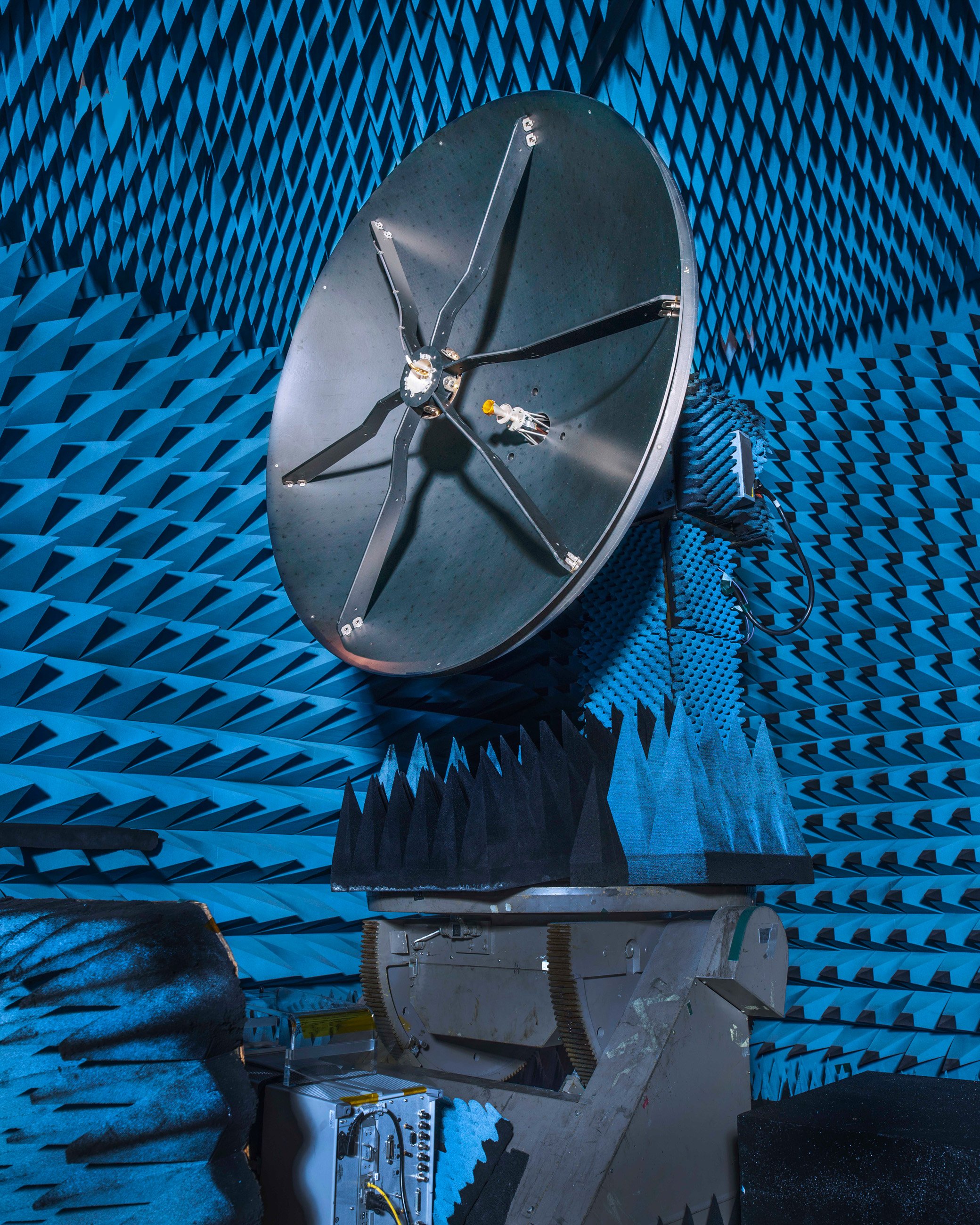
Testing 1-2-3
Before reaching the final frontier, spacecraft need to withstand liftoff. “Rocket launches are pretty loud,” says Dunn, the Roman project manager. “They get you huge vibrations. You’re sitting on a bomb that is going off slowly.” At Goddard, Roman’s High Gain Antenna (above), its primary communications link, underwent vibrational testing to mimic liftoff and ascent and had its performance checked in an echo-free chamber. The center also has an Acoustic Test Chamber that can produce sound levels as high as 150 decibels, as well as a 120-foot-diameter centrifuge to simulate the increased feeling of gravity’s pull during launch. While roller coasters top out around 5 Gs—five times the force of Earth’s gravity—Goddard’s centrifuge can create up to 30 Gs. Thankfully, launch forces are significantly lower.
Simulating Space
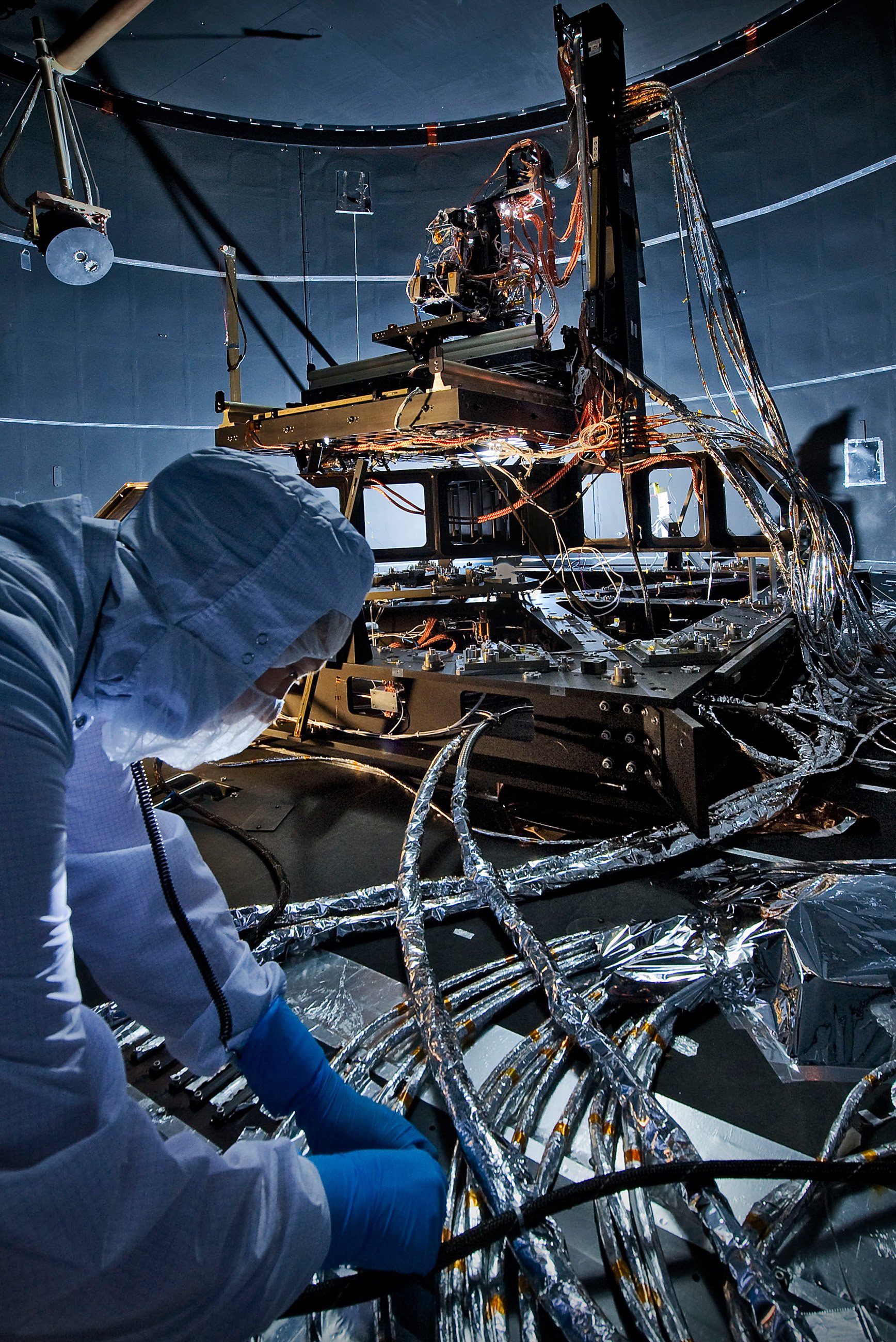
To ensure that equipment can function in the frigid, airless environment of outer space, Goddard workers use the Space Environment Simulator—a 40-foot-tall, 27-foot-wide chamber that, from the outside, looks like the world’s biggest and most hardcore Instant Pot and, on the inside, uses huge and powerful vacuum and liquid-nitrogen pumps to suck out all but the tiniest trace of air and atmospheric pressure. Contents such as components of the James Webb Space Telescope (right) are then subjected to temperatures ranging from 302 to 310 degrees below—or, in the case of the Webb telescope, minus 387 degrees via an extra helium shroud.
At Your Service
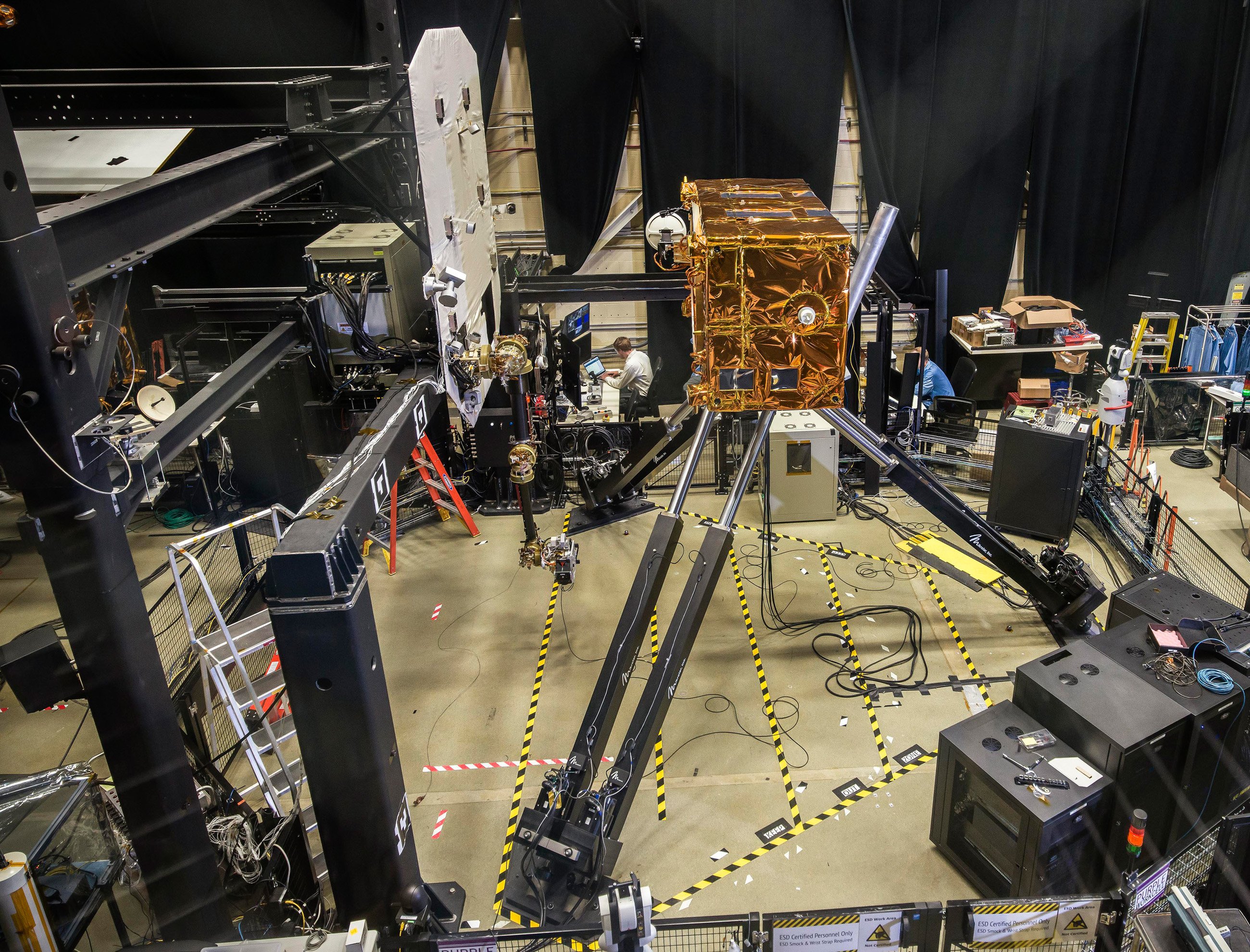
Imagine you have a flat tire or are running out of gas. Now imagine you’re in orbit. When multimillion-dollar satellites need fuel or repairs, they can’t just call for roadside assistance. Instead, they’re typically decommissioned—slowed down to burn up in the atmosphere or sent to out-of-the way “graveyard” orbits 22,400 miles above Earth. What if that weren’t the case? At its Robotic Operations Center, Goddard is developing new techniques for space-servicing, using an advanced robotic arm and mock satellite sitting atop a motorized, six-legged hexapod (above) to mimic microgravity—on-the-ground work that could ultimately extend satellites’ usefulness and lifespans.
Back to Top
This Way Up
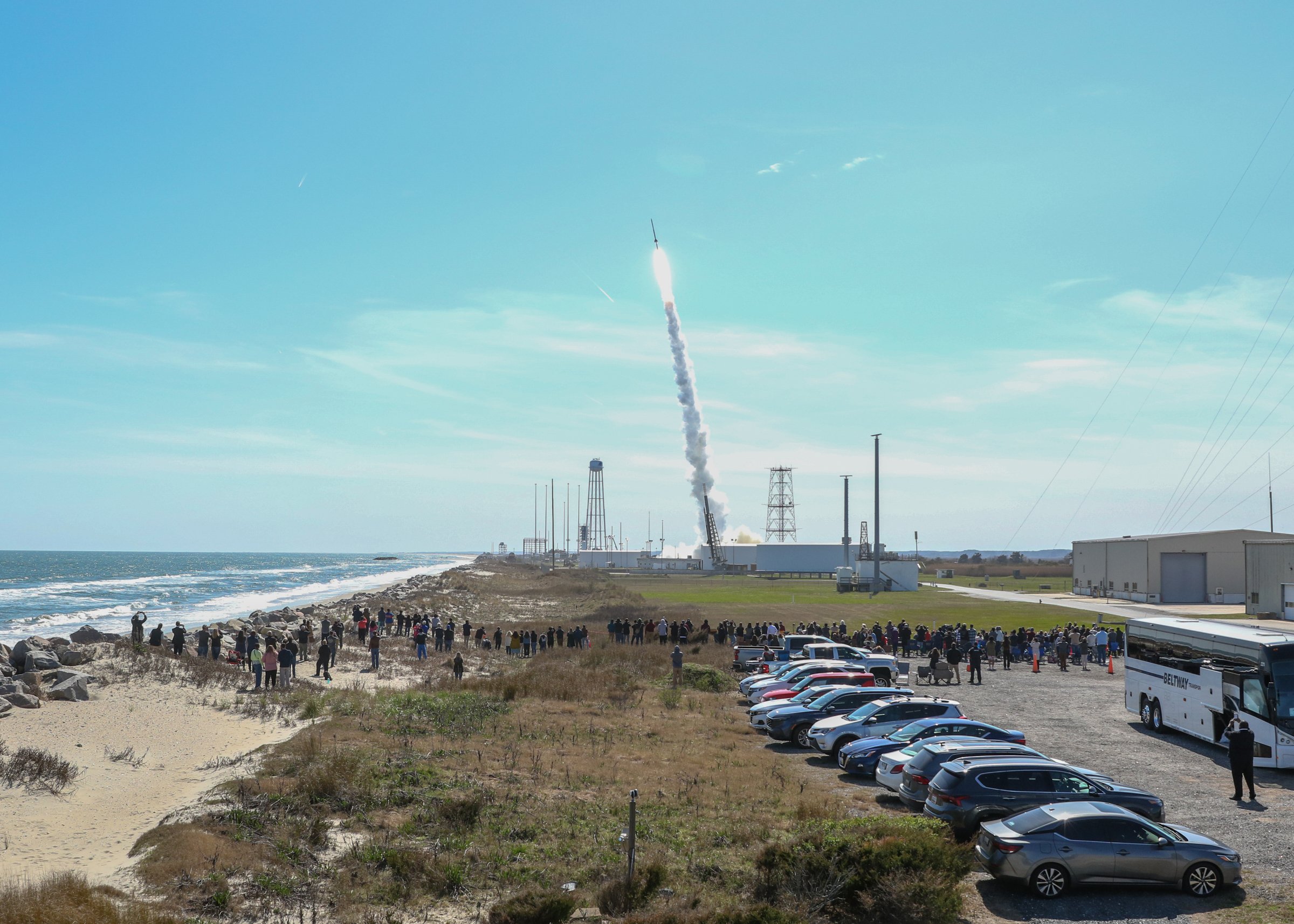
Liftoff!
Befitting its namesake, Robert H. Goddard—a pioneering scientist considered to be the father of modern rocketry—the center also manages the Wallops Flight Facility on Wallops Island, Virginia. An active rocket-launch range since 1945, Wallops is NASA’s primary facility for suborbital programs and frequently launches “sounding rockets” that carry scientific instruments to take measurements and perform experiments in flight. During 2024’s solar eclipse, Wallops launched a Black Brant IX rocket (above) to study disturbances in the ionosphere, the electrified region of Earth’s atmosphere, created when the moon eclipses the sun. For NASA, launches are “very nerve-wracking, all the way up to the end,” says Dunn, the Roman Space Telescope’s project manager. “The planning is exhaustive—dress rehearsals, dry runs, coming up with contingency plans for the things that can go wrong. When that rocket goes off and everything is fine and it’s heading up, that feeling of joy starts washing over everybody, like ‘Wow, you did it.’ ” Dunn laughs: “And then when it’s in orbit, it’s gotta work.”
This past December, NASA’s Parker Solar Probe flew closer to the sun than any spacecraft ever has, surviving expected temperatures of 1,800 degrees to collect data that’s helping scientists better understand how stars work. Before beginning its seven-year journey, however, the probe was put through the ringer closer to home—enduring just over two months of testing in airlessness and extreme cold (minus 292 degrees) at Goddard Space Flight Center in Greenbelt.
Established in 1959 as the nation’s first space-flight complex, Goddard oversees a $4 billion portfolio and is home to about 10,000 employees spread across its 1,270-acre main campus and sites in five other states. Its scientists, engineers, and technologists survey the moon for future crewed missions and study climate change back home. They peer into the cosmos with the Hubble Space Telescope and talk to astronauts on the International Space Station. They help ask scientific questions (do asteroids contain life’s chemical building blocks?), then work on missions to find answers (such as sending a robot to an asteroid to collect some rocks and bring them back to Earth). “We don’t do every single aspect on every single mission,” says Goddard director Makenzie Lystrup. “But we can. That’s what makes Goddard so important and unique.”
Currently, the center is readying the Nancy Grace Roman Space Telescope for launch by 2027. With a field of view that’s at least 100 times larger than Hubble’s, it could end up measuring light from a billion galaxies, providing an unprecedented view of the universe. Here’s an inside look at those preparations and some of Goddard’s other work—all pushing us farther into the stars.
Back to Top
Welcome to Goddard

Making History
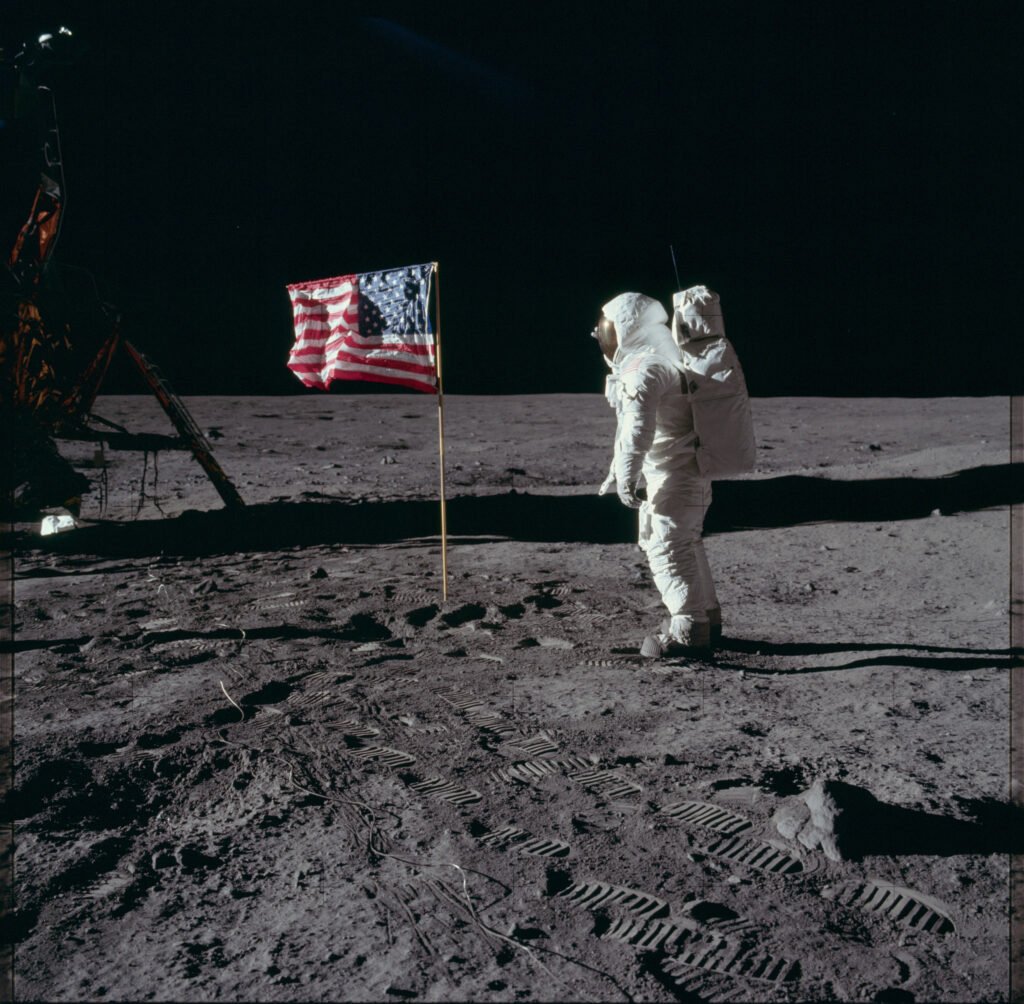
When Apollo 11 touched down on the moon in 1969, the first people to hear Neil Armstrong say “The Eagle has landed” were at Goddard, where engineers also created the tech that captured and broadcast the first moonwalk. Other groundbreaking moments at the center include early leadership of Project Mercury, the first US human space-flight program, and managing TIROS 1, the first weather-observation satellite. Goddard has since pioneered the repair of satellites in orbit and created instruments that have been sent to every planet in the solar system. Up next? Designing a space telescope to search for signs of life on planets orbiting other stars.
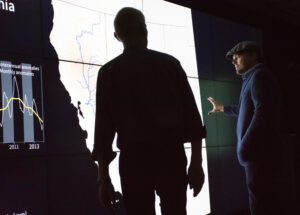
Famous Faces
While producing a climate-change documentary in 2016, actor Leonardo DiCaprio (right) visited Goddard to discuss NASA’s work studying Earth’s atmosphere and oceans with Piers Sellers (left), a former astronaut and scientist. Queen Elizabeth II, Kamala Harris, and Star Trek actress Nichelle Nichols have also visited the Greenbelt campus.
Views From Above


A fleet of orbiting satellites gives scientists—including those at Goddard, a global hub for climate research—a top-down view of weather patterns and events, including 2024’s Hurricane Beryl, a powerful storm that caused almost 50 deaths in the US and billions of dollars of damage across the Caribbean and North America. Looking out into the cosmos, the Hubble Space Telescope produced this image of spiral galaxy NGC 3455 (right), located 65 million light years away in the Leo constellation. In orbit since 1990, the telescope has spied a comet colliding with Jupiter, discovered moons around Pluto, and spotted the most distant star ever seen, Icarus, whose light took 9 billion years to reach Earth.
Back to Top
Building Roman

Inside the Clean Room
In development for more than a decade and expected to cost about $4 billion, the Roman Space Telescope will allow NASA to complete a census of planets outside our solar system and to better understand the ongoing expansion of the universe. Workers are assembling the telescope within Goddard’s eight-story-high clean room (above), which prevents contaminants from damaging spacecraft. Large enough to fit two space shuttles’ worth of cargo, the room circulates almost 1 million cubic feet of air a minute through 9,000 square feet of filters (in the wall on the left) that remove particles larger than five microns across—about 7 percent of the width of a human hair. Workers are forbidden to wear perfume, lotion, and deodorant; go through a 10-to-15-minute decontamination process; and don sterile “bunny suits” before entering an environment 1,000 times cleaner than a hospital operating room. “Roman’s optics have to be pristine, or else it’s analogous to fogging up your glasses,” says Jamie Dunn, the telescope’s project manager. “Even water is a contaminant—it can ice up in locations you don’t want.”
Assembly Required

A multi-year process, Roman’s construction is a bit like fitting together the world’s most high-tech Lego blocks. Its Optical Telescope Assembly (above, top) contains ten mirrors to focus cosmic light, while its coronagraph (above, middle) is designed to help scientists view distant planets by obscuring the glare of their host stars. Operating at minus 288 degrees to reduce electronic noise, a collection of 18 highly sensitive light detectors (above, bottom) will help convert collected light into crisp images and allow astronomers to look deeply at wide swaths of the sky. Linking and powering Roman’s components will be a whole lot of electrical cabling—enough to reach eight times higher than Mount Everest’s peak if laid end to end.
Back to Top
Shipshape and Space-Worthy

Testing 1-2-3
Before reaching the final frontier, spacecraft need to withstand liftoff. “Rocket launches are pretty loud,” says Gunn, the Roman project manager. “They get you huge vibrations. You’re sitting on a bomb that is going off slowly.” At Goddard, Roman’s High Gain Antenna (above), its primary communications link, underwent vibrational testing to mimic liftoff and ascent and had its performance checked in an echo-free chamber. The center also has an Acoustic Test Chamber that can produce sound levels as high as 150 decibels, as well as a 120-foot-diameter centrifuge to simulate the increased feeling of gravity’s pull during launch. While roller coasters top out around 5 Gs—five times the force of Earth’s gravity—Goddard’s centrifuge can create up to 30 Gs. Thankfully, launch forces are significantly lower.
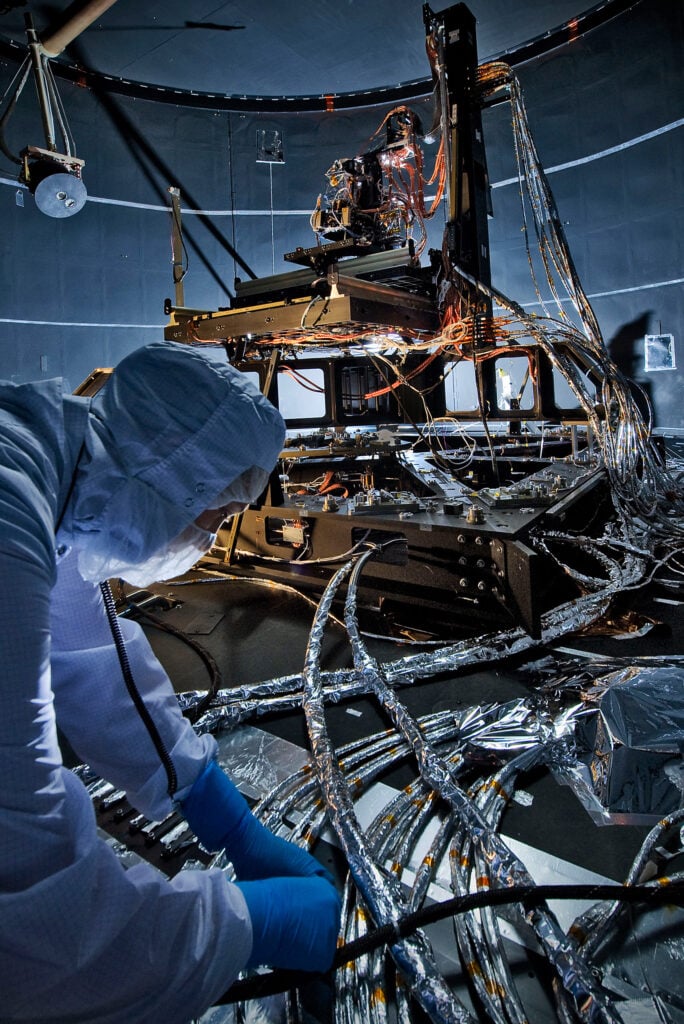
Simulating Space
To ensure that equipment can function in the frigid, airless environment of outer space, Goddard workers use the Space Environment Simulator—a 40-foot-tall, 27-foot-wide chamber that, from the outside, looks like the world’s biggest and most hardcore Instant Pot and, on the inside, uses huge and powerful vacuum and liquid-nitrogen pumps to suck out all but the tiniest trace of air and atmospheric pressure. Contents such as components of the James Webb Space Telescope (right) are then subjected to temperatures ranging from 302 to 310 degrees below—or, in the case of the Webb telescope, minus 387 degrees via an extra helium shroud.
At Your Service

Imagine you have a flat tire or are running out of gas. Now imagine you’re in orbit. When multimillion-dollar satellites need fuel or repairs, they can’t just call for roadside assistance. Instead, they’re typically decommissioned—slowed down to burn up in the atmosphere or sent to out-of-the way “graveyard” orbits 22,400 miles above Earth. What if that weren’t the case? At its Robotic Operations Center, Goddard is developing new techniques for space-servicing, using an advanced robotic arm and mock satellite sitting atop a motorized, six-legged hexapod (above) to mimic microgravity—on-the-ground work that could ultimately extend satellites’ usefulness and lifespans.
Back to Top
This Way Up

Liftoff!
Befitting its namesake, Robert H. Goddard—a pioneering scientist considered to be the father of modern rocketry—the center also manages the Wallops Flight Facility on Wallops Island, Virginia. An active rocket-launch range since 1945, Wallops is NASA’s primary facility for suborbital programs and frequently launches “sounding rockets” that carry scientific instruments to take measurements and perform experiments in flight. During 2024’s solar eclipse, Wallops launched a Black Brant IX rocket (above) to study disturbances in the ionosphere, the electrified region of Earth’s atmosphere, created when the moon eclipses the sun. For NASA, launches are “very nerve-wracking, all the way up to the end,” says Gunn, the Roman Space Telescope’s project manager. “The planning is exhaustive—dress rehearsals, dry runs, coming up with contingency plans for the things that can go wrong. When that rocket goes off and everything is fine and it’s heading up, that feeling of joy starts washing over everybody, like ‘Wow, you did it.’ ” Gunn laughs: “And then when it’s in orbit, it’s gotta work.”
This article appears in the February 2025 issue of Washingtonian.
